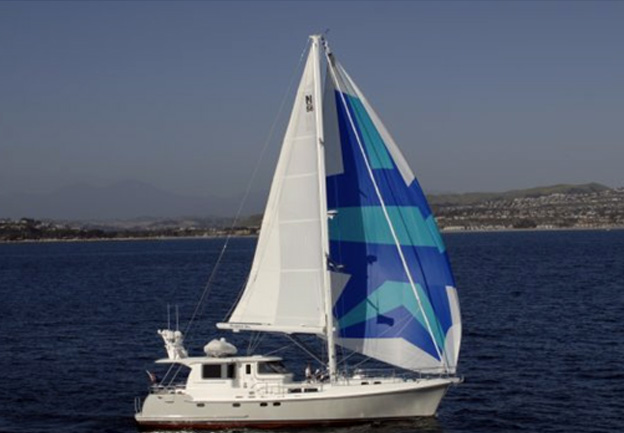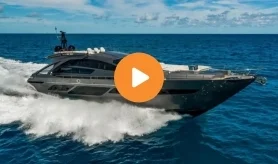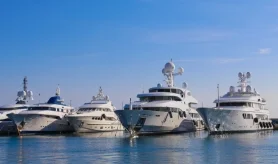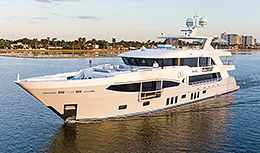- Alaskan Yachts
- Azimut Yachts
- Back Cove Yachts
- Beneteau Yachts
- Benetti Superyachts
- Bertram Yachts
- Boston Whaler
- Broward Yachts
- Buddy Davis Sportfish
- Burger Yachts
- Cabo Yachts
- Catamarans
- Carver Motoryachts
- Center Console
- Chris-Craft Yachts
- Cruisers Yachts
- DeFever Trawlers
- Dufour Sailboats
- Fairline Yachts
- Feadship Yachts
- Ferretti Yachts
- Formula Yachts
- Fountaine Pajot Cats
- Grady-White
- Grand Banks Trawlers
- Hargrave Yachts
- Hatteras Yachts
- Hinckley Picnic Boats
- Horizon Yachts
- Hydra-Sports
- Intrepid Boats
- Jarrett Bay Sportfish
- Jeanneau Yachts
- Kadey-Krogen Trawlers
- Lazzara Yachts
- Lekker Boats
- Luhrs Sportfish
- Marlow Yachts
- Maritimo Yachts
- Marquis Yachts
- McKinna Motoryachts
- Meridian Yachts
- Midnight Express
- MJM Yachts
- Mochi Craft
- Neptunus Motoryachts
- Nordhavn Trawlers
- Nordic Tugs
- Numarine Yachts
- Ocean Alexander Yachts
- Offshore Yachts
- Outer Reef
- Oyster Sailing Yachts
- Pacific Mariner Yachts
- Palmer Johnson Yachts
56 Nordhavn Motorsailer
![]()

Source: Zuzana Prochazka, Mad Mariner Magazine
Part Trawler, Part Sailboat, the 56 Motorsailer Is Intrepid
Nordhavn, long known for designing and producing ocean-crossing passagemakers, is extending the reach of its offshore yachts, this time with the 56 Motorsailer.
A departure from the builder’s renowned trawlers, the 56 is a reminder of the company’s strong sailing origins. Pacific Asian Enterprises, which builds Nordhavns, produced the well-known Mason line of sailboats from the 1970s to the 1990s, putting roughly 250 hulls on the water in lengths from 34 to 64 feet.
|
LOA |
57′ 5″ |
|
LWL |
52′ 6″ |
|
Beam |
16′ 17″ |
|
Draft |
6′ 0″ |
|
Displacement (full) |
70,410 Pounds |
|
Fuel Capacity |
750 Gallons |
|
Water Capacity |
250 Gallons |
|
Holding Tank |
75 Gallons |
|
Sail Area |
1,147 Square Feet |
|
Main |
590 Square Feet |
|
100% Jib |
557 Square Feet |
|
Base Price |
$1.6 Million |
|
Price as Tested |
$1.8 Million |
Standard equipment: 12-kW Northern Lights genset, 3 Cruisair A/C units, Kobelt hydraulic steering, SSB radio ground plate, 24-volt Outback inverter/charger, Corian counters with fiddles, GE trash compactor, 105-lb. stainless steel plow anchor and 400′ of 3/8 HT chain with swivel, Maxwell chain stopper, 24-volt Maxwell VWC 3500, Navtec hydraulic boom vang, in-boom furling, head sail furler by Reckmann, full batten main and 100% genoa. Optional equipment on test boat: stern thruster, granite counters, Furuno NavNet 3D navigation package, 2 Icom VHFs, 3 flat-panel TVs.
That heritage is apparent in Nordhavn’s 56 Motorsailer, a well-performing, well-appointed vessel designed to extend the range of cruising options available to owners with an eye for blue water.
The Nordhavn 56 is joins entries such as Hunter’s Edge 27 and Island Packet’s 41-foot SP Cruiser as part of a wave of new motorsailers aimed at different segments of the market. But Nordhavn’s approach is all its own.
While motorsailers are traditionally moderate-displacement sailboats that have strong abilities under power, Nordhavn emphasizes that this is a heavy-displacement cruising vessel that has the ability to sail. The result is a boat that combines the liveaboard comforts of a trawler with the go-anywhere capabilities of a sailboat, harnessing some impressive technology – like a variable-pitch prop to optimize speed and fuel economy – along the way.
With a base price of $1.6 million, it is not cheap. And a discerning eye will find improvements to be made to enhance safety and comfort up on deck. But overall, the boat is a nice blend of power and sail, technology and comfort, adventure and fun.
SAILING PERFORMANCE
I have to say that I expected the 56 Motorsailer to sail like, well, a trawler. In fact, it’s dubbed a trawlersailer, and that brings to mind all sorts of images of sluggish beasts that are neither fish nor fowl. So my expectations were low when a group of 11 other journalists and I headed out of Newport Harbor, California, under an overcast sky, air temps in the 60s and true wind in the 10- to 15-knot range. Someone in our group said, “I’m ready to sail, which button do I push?”
And sure enough, with one index finger, the fully battened main unrolled from the Leisure Furl in-boom furler, and within 30 seconds was hoisted with the help of a Lewmar hydraulic-powered winch. Another power winch took care of the mainsheet, and a third unrolled the 100-percent genoa in 15 seconds flat, and suddenly we were sailing. In fact, with the apparent wind angle at 65 degrees, we sailed at 6.1 knots in 14 knots of true breeze.
Heeling slightly, the 56 Motorsailer moved through the small chop with a sea kindly motion. The boat tracked well, and there was no pressure on the helm. As we tacked and headed off to a reach, the speed went to 5.4 knots at 90 degrees apparent wind in about 11 knots of true. The tacking angle averaged 130 degrees. The 56 is no racing sled, but I was pleasantly surprised by the numbers.
Reefing on the 56 is a snap, or better said, a push of another power winch button, which is good because this is a substantial rig. With a bridge clearance of 74 feet, the double-spreader, keel-stepped Forespar mast is not just for show. In fact, with the standard genoa, the masthead sloop rig supports a sail area of 1,217 square feet. A gennaker is optional and can add about a knot of boat speed. Although we didn’t fly the chute on our test sail, a photo from a few days earlier showed instruments reading a speed of 8.5 knots in 22 knots of breeze on a reach with the prop feathered.
DESIGN AND CONSTRUCTION
Enjoying a moment of true yachting, I noticed that despite there being 12 of us aboard, the boat wasn’t crowded. Some were in the pilothouse and others in the cockpit, but we were not in each other’s way. I have yet to find a 50-something-foot sailboat where a dozen people seem to just disappear.
Since the 56 Motorsailer is intended for long-range cruising, its engineering and construction are all about functional ruggedness. There is no coring in the hull, but for weight savings, the house sides employ Klegecell foam sandwich with balsa-cored horizontal surfaces. There are two water-resistant bulkheads – the company will not call them “water tight” – one behind the chain locker and one just aft of it, behind the sail locker in the bow. Although the main bulkheads are wood, longitudinal stringers are glass on foam, and no wood is used in the engine room.
The bow is full and flared to power into waves, and the bottom is a full keel with a Brewer’s Bite ahead of the prop for improved handling. The boat draws six feet. The rudder is skeg-hung, and the prop is in an enclosed aperture for protection. An internal lead ballast of 17,500 pounds keeps the boat on her feet.
Overall, this boat remains true to Nordhavn’s blue water roots. Long-distance voyaging was heavily promoted for the trawler line from 2001 to 2002 when a team from the company circumnavigated in a Nordhavn 40, cruising 24,000 nautical miles in just 20 months. Nordhavn owners have followed up with far-flung adventures of their own, including multiple transatlantic rallies and a recently proposed jaunt from the West Coast to Japan via the Bering Sea. The unofficial company motto is that Nordhavns don’t look for slips because they’re always out cruising, and the 56 Motorsailer upholds that tradition. It is designed to be offshore and out in the trades.
COCKPIT, DECK AND RIGGING
The forward “sailing” cockpit is a large space, measuring 7 feet, 4 inches wide by 7 feet, 7 inches long, and has an Edson steering pedestal, a 36-inch destroyer wheel, instruments, chartplotter and dual-lever engine controls. Nordhavn isn’t the first to put a sailing cockpit ahead of the pilothouse, but I see no way to shelter the area with a dodger or bimini. It will be cold in a blow and hot in the tropical sun. But for a quick sail adjustment or cocktails at sundown, it accommodates eight or more, with room to spare.
To manage the rig, there are seven winches. Two are for the genoa, two handle the gennaker or aft dock lines, one is for the mainsheet and one does double duty for the main and genoa halyards. There is also a small, non-self-tailing snubber winch to keep pressure on the halyard when furling the mainsail. The eight-foot Lewmar “T” track for the genoa is out of the way on the rail on both sides. The Lewmar Commander 400, a compact hydraulic power unit, operates the winches, windlass, furling systems, vang and auxiliary functions like the Kobelt hydraulic steering assist.
The genoa primaries are aft and on the sides of the wheelhouse and cannot be reached from the cockpit. Also, the trimmer will need to go through the salon to the aft cockpit, where the secondaries for the gennaker are located. Sailing short-handed will keep the trimming perfectionist on the move for sure.
The continuous stainless steel handrail provides good safety all around the deck. However, the forward deck terminates at the wheelhouse, so you have to walk through the salon to reach the stern. The owner of Hull Number One added rails to the sides of the wheelhouse and nonskid tape to the small flange, which he stands on to manage lines and fenders along the length of the boat. Also, adding a handhold on either side of the front of the wheelhouse would assist in scrambling up into the forward cockpit.
No one will mistake the stern of the 56 Motorsailer for that of a sailboat – it’s all trawler, with a small swim step, a high transom and a cockpit that runs the full beam and is seven feet fore and aft. This provides an excellent lounging area, complete with fridge, barbecue and a deck shower. The high freeboard and tall wheelhouse make for significant windage, but the standard Side-Power bow thruster and optional stern thruster make handy work of docking. A 10-foot RIB can be stowed athwartships atop the wheelhouse roof and hoisted and lowered via a power winch – a clever use of the boom.
A notable feature of most Nordhavns is the curved windows in the wheelhouse. This ensures that there are no blind spots on the corners, as the ½-inch tempered glass wraps around. A drip pan of sorts is built in below the opening portions of the windows to catch water. Also nice are the watertight Dutch doors that open completely or can split horizontally so that only the top half opens. Both the windows and the aluminum doors are by Pacific Coast Marine, which targets vessels facing the roughest conditions in the world.
LAYOUT AND DESIGN
The 56 Motorsailer is designed to optimize life aboard with abundant of storage, at least 6-feet, 6-inches of headroom, and plenty of recessed Cantaluppi lighting. The salon is on the same level as the pilothouse and flows into it, making this a large, comfortable space fitted with a U-shaped settee to starboard and either two chairs or a bench to port, with a 360-degree view. The finish is pure Nordhavn, with a teak and spruce sole and semi-gloss teak cabinetry. Even the insides of the lockers are finished, and the joinery is exquisite.
Buyers have a choice of two layouts below deck, which is five easy steps down. In one, the majority of the space is dedicated to the enclosed engine room amidships, with a U-shaped galley and a small dinette to starboard and a washer and dryer recessed in the passageway to port. In the other, the engine room is limited to the space below the sole, and a second settee is added. While the galley design provides great bracing underway, its below-decks location means that the cook is left out of the social action in the salon. However, a hatch above it leads to the forward cockpit, so goodies can be handed up directly. A stacked refrigerator and freezer are next to the dinette, and a second 8.8-cubic-foot U-Line freezer is in the machinery space under the aft cockpit. The galley also includes a Force Ten stove and a GE microwave, and has plenty of stowage for both stores and dishes.
The master stateroom is aft and down a few steps, with a centerline island bed, a small desk and ample storage. The head, to starboard, has design details that rival bathrooms in many homes. The guest cabin is forward and, although a bit smaller, it’s so well finished that it could be mistaken for the master on most vessels. Both heads have good-sized separate showers with fiberglass liners for low maintenance.
Almost everything on the 56 Motorsailer is standard, the exceptions being granite counters, stern thruster, flat-panel televisions and the electronics package, which is substantial. Multiple screens in the pilothouse and one at the outside helm feature the Furuno NavNet 3D navigation software. Redundant VHF radios, wind instruments and controls are at the helmsperson’s fingertips and there is enough room on the dash to add satphones, an SSB or whatever else is desired for communications.
THE POWER SIDE
Nordhavn has yet to release complete performance figures for the 56 Motorsailer under power, and my time aboard was almost exclusively under sail. However, the builder says the single 165-horsepower Lugger 1066T diesel will push the boat to 8.5 knots at 1700 rpm while burning 5 gph. Three fiberglass fuel tanks totaling 750 gallons should ensure that the 56 has a 3,000-nautical-mile range at 6.5 knots. An aluminum 12-gallon day tank gravity feeds from the main tanks.
The Lugger is a low-revving and naturally quiet engine originally designed for Alaskan fishing boats. At 1200 rpm, I measured 75 decibels in the galley near the engine room, and at 1800 rpm, I measured only 68 decibels in the pilothouse (65 is considered normal conversation level).
Access to the engine and the fuel filters is excellent on all sides, with an additional hatch allowing you to reach to the Twin Disc transmission aft. In case substantial engine work is needed, the forward cockpit sole can be removed and the engine lifted out with the assistance of the main boom. Fire-suppression and oil-changing systems are standard, and a Raymarine camera monitors the engine space.
Nordhavn normally adds a wing engine, a small secondary auxiliary power plant designed as a get-home engine, but the sails are the only way to get home on the 56. The boat also doesn’t have stabilizers – a job left to the roll-damping effects of the rig.
Like many Nordhavns, the 56 has a separate machinery space below the sole of the aft cockpit. The area provides massive storage and holds the 12-kilowatt Northern Lights generator, the 3-kilowatt inverter and the six house batteries providing 765 amp hours. There are also separate batteries for the bow thruster and to start the engine. Since this is a 24-volt boat, a 12-volt battery is installed in the pilothouse to charge equipment such as mobile phones and laptops.
Possibly the most interesting feature on the 56 Motorsailer is the controllable-pitch propeller by Hundested, a Danish manufacturer specializing in variable-pitch props for commercial boats, ships and yachts. The prop pitch can be increased or decreased underway to maximize engine efficiency and control speed, especially when motorsailing. Under sail alone, the prop feathers to reduce drag. The engine has to be running at less than 800 rpm before activating the push-button controls at the inside helm, and it’s amazingly fast and easy to optimize the prop.
This system has been proven on many vessels, and it’s the ultimate fuel saver for long-distance voyaging. But it doesn’t come cheap. The 36-inch prop and shaft assembly is reported to cost $75,000. As a point of comparison, the Lugger diesel and transmission have a price tag of $35,000.
PAE is building hull number eight of the 56 Motorsailer, which is impressive in a sluggish economy. I asked the owner of the first hull what appealed to him about the design. An ex-powerboater, he liked the simplicity and the luxuries of voyaging in a trawler.
“But it’s the economy,” he added. “I don’t ever want to be limited by the cost of fuel. I had a go-fast boat, and now I have a go-far boat.”



